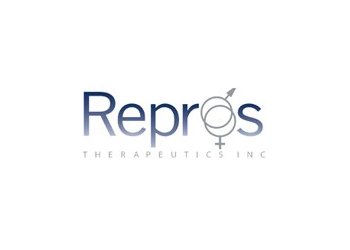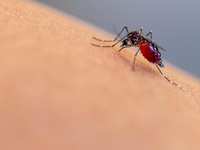- Sections :
- Crime & Public Safety
- Restaurants & Food
- Sports
- More
Repros Reports Results in Study of Androxal

THE WOODLANDS, Texas -- October 7, 2009 -- Repros Therapeutics Inc. (NasdaqGM:RPRX) has announced results from an exploratory, efficacy and safety study of its drug Androxal® in men with secondary hypogonadism who were receiving testosterone replacement treatment. Secondary hypogonadism is a deficiency state in which the male hormone testosterone goes below the normal range, even in aging men, due to inadequate stimulation of the testes by the pituitary.
The study was designed to compare Androxal to Testim®1% (Auxilium Pharmaceuticals Inc, Malvern, PA), an approved topical testosterone gel, indicated for testosterone replacement therapy in adult males for conditions associated with a deficiency or absence of endogenous testosterone. Transdermal testosterone use has been associated with suppression of pituitary gonadotrophic hormones, luteinizing hormone (LH) and follicle stimulating hormone (FSH), both necessary for stimulating testosterone production and spermatogenesis in the testes. Androxal is an oral therapy intended to restore normal brain-pituitary-testes interaction and thus testicular function in men with secondary hypogonadism.
This small trial was designed as a two-center, three-arm, randomized, open-label, fixed dose, active-control, proof-of-principle study in men between 46 and 51 years of age who were treated previously with a topical testosterone gel. Upon qualifying for study participation, and after a three-week wash-out period the men were randomized to one or the other of the first two treatment arms. A third arm was added after the first two arms were fully recruited:
3 week wash-out followed by 25 mg Androxal daily for 6 months (Group A);
3 week wash-out followed by daily Testim 1% gel for 6 months (Group B);
3 months wash-out followed by 25 mg Androxal daily for 6 months (Group C).
All treatments were followed by a 1-month post-treatment follow-up period. Key study parameters were concentrations of serum total testosterone (TT), LH and FSH as well as sperm counts at 3 and 6 months of treatment.
Results
Group A vs. B: 7 men were randomized to Androxal and 5 men to Testim. After stopping their previous topical testosterone treatment for 3 weeks, the study subjects had baseline morning mean TT values of 165 ± 66 ng/dL, confirming their hypogonadal state. At 3 and 6 months of treatment, there was a statistically significant increase in mean TT compared with baseline in both treatment groups. TT was not significantly different between the 2 groups at 3 (p = 0.29) and 6 months (p = 0.90). At 6 months, mean TT levels were 545 ± 269 and 525 ± 256 ng/dL for the men receiving Testim and Androxal, respectively. These values are well within the normal range (300-1000 ng/dL).
Androxal consistently elevated sperm counts into the normal range after 3 and 6 months of treatment and at follow-up. Testim resulted in sperm counts below 20 x 106/ml (the level below which a man would be considered infertile) for all 5 men at 3 months. At 6 months, 3 of the 5 Testim treated men remained well below the 20 x 106/ml level exhibiting little to no detectable sperm count, whereas the other two showed levels > 20 x 106/ml. The sperm count was statistically significantly higher in the Androxal than the Testim treated group at 3 (p = 0.004) and 6 months (p = 0.009).
Androxal increased both LH and FSH while men on Testim had significantly lower levels of these hormones. The baseline LH and FSH levels for men in the study were 1.02 ± 1.44 mIU/ml and 0.99 ± 1.00 mIU/ml, respectively. These values are at the low end of normal. Androxal stimulated statistically significant increases in LH and FSH compared to Testim at all time points. Androxal increased mean LH significantly at 3 months to 5.7 ± 3.2 mIU/ml (p = 0.013) and to 6.1 ± 3.1 mIU/ml (p = 0.004) at 6 months. The mean FSH levels for men on Androxal were 4.5 ± 2.4 mIU/ml at 3 months (p = 0.015) and 5.5 ± 2.5 mIU/ml at 6 months (p = 0.003). In contrast, men on Testim had significantly lower mean levels of these important fertility related hormones, both of which were in the 0.6 – 1.06 mIU/ml range across the treatment periods. At one month follow-up, testosterone levels had decreased to pre-study, hypogonadal level (< 300 ng/dl) for all men in both treatment groups. Upon discontinuation of treatment, LH and FSH levels in Androxal-treated men decreased and in Testim-treated men increased back to low normal range.
Results from Groups A and B show that Androxal significantly increased TT and sperm counts. The increases in LH and FSH with Androxal have been demonstrated before in a long term study for over a year in men with secondary hypogonadism and this study confirms that this is the mechanism by which testosterone levels can be normalized through endogenous testosterone while fertility is restored. Overall, treatment with Androxal and Testim was well tolerated in this study, with few side effects being reported.
Dr. Jed Kaminetsky (Department of Urology, New York University Medical Center), the lead investigator noted, “Androxal may fill the need for a drug that is able to restore testicular function and at the same time provide the benefits that normalization of testosterone provides to hypogonadal men. If Androxal can be safely developed, it will represent an important new treatment option for men with secondary hypogonadism with a continued fertility interest.”
Repros Therapuetics hopes to submit a request for a meeting to the FDA to determine whether the agency deems these observations to be clinically relevant and whether a development program can be designed to confirm the findings of this study, and ultimately support a label for the treatment of secondary hypogonadism in men who wish to preserve their fertility.
Source: Repros Therapuetics, Inc.





